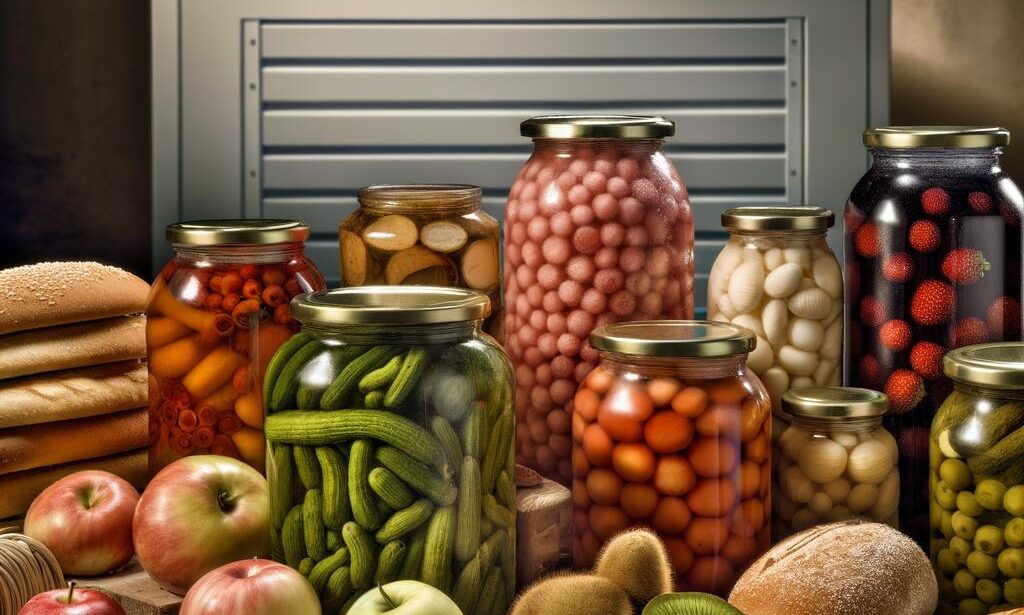In the quest to maintain the freshness and flavor of our food, storage plays a pivotal role. The way we store our groceries, leftovers, and bulk purchases can significantly impact their taste, nutritional value, and overall quality. “Preserving Taste: The Effects of Food Storage” delves into the science and techniques behind keeping our food at its best for as long as possible. This article will explore the various factors that influence the preservation of taste in food storage, including temperature, humidity, packaging, and the chemical properties of different food items. By understanding these elements, consumers can make informed decisions about how to store their food to maximize flavor and minimize waste. Join us as we unravel the complexities of food storage and its profound effects on the sensory experience of our meals.
Table of Contents
- The Impact of Food Storage on Flavor and Quality
- Best Practices for Preserving Taste in Refrigerated Foods
- Understanding the Role of Packaging in Maintaining Flavor
- The Science of Freezing: How to Preserve Taste in Frozen Foods
- Tips for Extending the Shelf Life of Pantry Staples
- Q&A
- Wrapping Up

The Impact of Food Storage on Flavor and Quality
When it comes to preserving the flavor and quality of food, proper storage is key. The way we store our food can have a significant impact on its taste, texture, and overall appeal. Whether it’s fruits and vegetables, meats and dairy products, or pantry staples like grains and spices, the way we store our food can make a big difference in how it tastes when we finally sit down to enjoy it.
Here are some key ways that food storage can affect the flavor and quality of our favorite foods:
- Taste: Improper storage can lead to flavor loss, while proper storage can help preserve the natural taste of food.
- Texture: Moisture and temperature can impact the texture of food, affecting its overall quality.
- Nutritional value: The way we store food can also impact its nutritional content, with improper storage leading to nutrient loss.
| Food Item | Ideal Storage Method |
|---|---|
| Leafy greens | Store in a breathable container in the refrigerator to maintain crispness. |
| Meat and poultry | Wrap tightly and store in the coldest part of the refrigerator to prevent spoilage. |
| Spices | Keep in a cool, dark place to preserve flavor and potency. |

Best Practices for Preserving Taste in Refrigerated Foods
When it comes to preserving the taste of refrigerated foods, there are several best practices that can help maintain the flavor and quality of your favorite dishes. By following these tips, you can ensure that your refrigerated foods stay fresh and delicious for longer periods of time.
One of the most important factors in preserving taste in refrigerated foods is proper storage. This includes using airtight containers to prevent odors from other foods from seeping in, as well as keeping foods at the right temperature to slow down the growth of bacteria and mold. Additionally, it’s important to pay attention to the shelf life of different types of foods and consume them before they spoil. Here are some :
- Use airtight containers to prevent odors from affecting the taste of foods
- Keep foods at the right temperature to slow down the growth of bacteria and mold
- Pay attention to the shelf life of different types of foods and consume them before they spoil

Understanding the Role of Packaging in Maintaining Flavor
When it comes to preserving the taste of food, packaging plays a crucial role in maintaining flavor and freshness. The right packaging can help to protect food from external factors such as light, air, and moisture, which can all contribute to the deterioration of flavor. Understanding the impact of packaging on food storage is essential for ensuring that the taste of food is preserved for as long as possible.
There are several key ways in which packaging can affect the flavor of food:
- Protection from air and moisture: Packaging that is airtight and moisture-resistant can help to prevent the oxidation and moisture loss that can lead to flavor degradation.
- Blocking light exposure: Light can cause the degradation of certain compounds in food, leading to changes in flavor. Packaging that blocks out light can help to preserve the original taste of the food.
- Preventing contamination: Packaging can also help to protect food from contamination by microorganisms, which can alter the flavor of the food.

The Science of Freezing: How to Preserve Taste in Frozen Foods
When it comes to preserving the taste of frozen foods, understanding the science of freezing is crucial. The process of freezing can have a significant impact on the taste and texture of foods, and knowing how to properly store frozen foods can help maintain their quality for longer periods of time.
One of the key factors in preserving taste in frozen foods is the rate at which they are frozen. Slow freezing can lead to the formation of large ice crystals, which can damage the cell structure of the food and result in a loss of flavor and texture. On the other hand, rapid freezing can help to minimize the formation of large ice crystals, preserving the taste and texture of the food.
Another important consideration in preserving taste in frozen foods is the packaging and storage conditions. Proper packaging can help to prevent freezer burn and oxidation, which can negatively impact the taste of frozen foods. Additionally, storing frozen foods at the correct temperature can help to maintain their quality over time.

Tips for Extending the Shelf Life of Pantry Staples
When it comes to extending the shelf life of pantry staples, proper food storage is key. By taking the right steps, you can preserve the taste and quality of your favorite ingredients for longer periods of time. Here are some tips to help you make the most of your pantry staples:
- Keep it cool and dry: Store pantry staples in a cool, dry place to prevent moisture and humidity from affecting their quality.
- Use airtight containers: Transfer items like flour, sugar, and grains to airtight containers to keep them fresh and free from pests.
- Rotate stock: Practice first in, first out (FIFO) to ensure that older items are used before newer ones, reducing the risk of spoilage.
By following these simple tips, you can maintain the taste and freshness of your pantry staples, saving money and reducing food waste in the process.
Q&A
Q: Why is it important to preserve the taste of food during storage?
A: Preserving the taste of food during storage is important to maintain its quality and ensure that it remains enjoyable to eat.
Q: What are the common factors that affect the taste of stored food?
A: Common factors that affect the taste of stored food include temperature, humidity, exposure to air, and the presence of other odorous foods.
Q: How does temperature affect the taste of stored food?
A: Temperature can affect the taste of stored food by either accelerating or slowing down chemical reactions that can alter the flavor and texture of the food.
Q: What are some best practices for preserving the taste of stored food?
A: Best practices for preserving the taste of stored food include using airtight containers, storing food in a cool and dry place, and avoiding exposure to strong-smelling foods.
Q: How can improper food storage affect the taste of food?
A: Improper food storage can lead to the growth of bacteria, mold, or yeast, which can cause food to spoil and develop off-flavors.
Q: Are there any specific foods that are more susceptible to taste changes during storage?
A: Yes, certain foods such as dairy products, meats, and fruits are more susceptible to taste changes during storage due to their high moisture content and susceptibility to spoilage.
Q: What are some innovative methods for preserving the taste of stored food?
A: Innovative methods for preserving the taste of stored food include vacuum sealing, using oxygen absorbers, and utilizing specialized storage containers designed to maintain freshness.
Wrapping Up
In conclusion, understanding the effects of food storage on taste is crucial for maintaining the quality of our food. By implementing proper storage techniques and understanding the factors that can affect taste, we can ensure that our food remains fresh and flavorful for longer periods of time. Whether it’s using airtight containers, keeping food at the right temperature, or minimizing exposure to light and air, there are various ways to preserve the taste of our food. By being mindful of these factors, we can enjoy the full flavor of our meals and reduce food waste. Ultimately, preserving taste through proper food storage not only benefits our palates but also contributes to a more sustainable and efficient food system.

